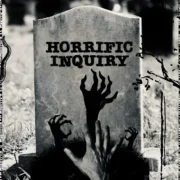GIANT LITTLE ONES: A Nuanced, Intelligent Story Of Teenage Love
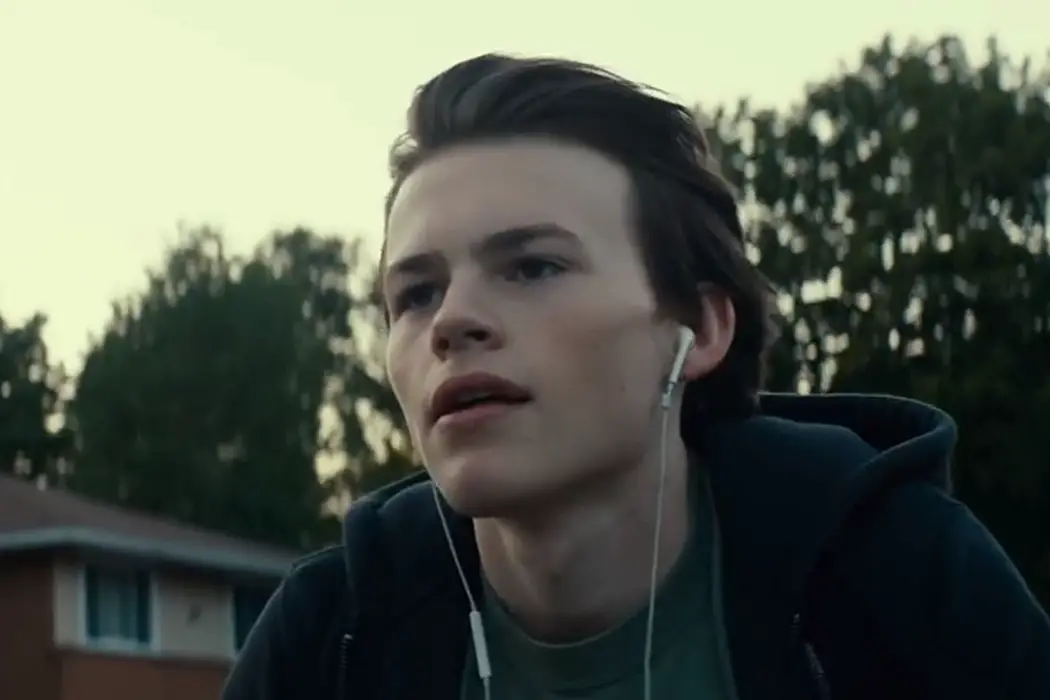
Ivy is a freelance writer and film journalist in NYC…
Giant Little Ones, directed by Keith Behrman, explores new territory in the teenage “coming out” film genre and it’s a refreshing, welcomed addition. The film opens with Franky Winters (Josh Wiggins) enjoying an idyllic teenage life. His best friend since childhood, Ballas Kohl (Darren Mann), is his constant companion as they sail through high school as popular kids with girlfriends and spots on the swim team. Though they are inseparable, they are two very different people. Franky is introverted, sweet and sensitive, while Ballas is mercurial, primal and dominant. He also uses violence to protect a gay boy and then to defend his masculinity, while Franky shrinks back from aggression. Despite the relative shiny exterior of their lives, Franky is uneasy.
There’s something pushing against him just under the surface that even he can’t really name. His 17th birthday party promises to be that special night with his girlfriend. But, he has no real excitement for it and approaches planning the night like a chore. When it’s cancelled, he comes alive again enjoying the night with Ballas. When they stumble back to his place, something surprising happens in the dark. As the ramifications of that night unfold, the film deftly reveals the deeper complexities of Franky’s life. His father (Kyle MacLachlan) left his mother (Maria Bello) for a man and Ballas’s sister, Natasha (Taylor Hickson) has a tragic connection with Franky from their past. By getting thrown into the deep end of sorting through his sexual identity, Franky finds himself in a way that resonates with emotional honestly, with answers that feel real because they’re messy ones.
Bold storytelling is successful through emotional authenticity
The sex scene is filmed completely in the dark, so when both reveal what happened that night the truth about Ballas’s character is crystal clear. He’s certainly not the friend Franky idealized him to be, even though it’s obvious Ballas loves him. This was brilliant writing because it allowed the act to be explicit enough to be unmistakable in its eroticism and instantly made it clear it’s Franky whose telling the truth. Giant Little Ones takes a bold move in being about letting the labels go and allowing Franky to explore love and sex on his own terms. Later, when Frankly expresses his feelings for Natasha, though he’s accused of trying to prove he’s not gay by being with her, it’s clear it’s real for him. He’s figuring it out.
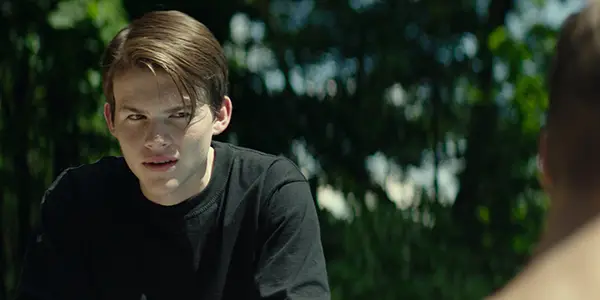
Because it is still dangerous to be a LGBTQ teenager, how it’s portrayed onscreen has resounding effects. Teenagers are looking for themselves in these roles to affirm they’re normal and lovable and wanted in the world. Giant Little Ones wins in its respect for the audience’s intelligence. It’s a celebration of love in all of its forms without corny overdone formulas. One of the best scenes is Franky’s father delivering the speech it seems any kid struggling to find their sexual identity would want to hear from a parent, inspiring tears over eye-rolls, which is an extraordinary feat. That it’s his gay dad giving it is even better.
I cried through a tenderly crafted scene of a conversation about sex after rape, portraying that sensitivity in masculinity shouldn’t be shoved into an identity box. Some of the best scenes are between Franky and his lesbian friend Mouse (Niamh Wilson). Gay teenagers comfortable in their own skin with great friendships on the big screen is a wonderful thing. The two leads give sophisticated, complex performances. Josh Wiggins can’t help comparisons to a young Matt Damon, with that smile that lets the audience in. Darren Mann burns with heat that’s both alluring and dangerous.
A Missing Piece Leave A Jagged Edge
The film feels a little undercooked towards the end. After a savage fight with Ballas, the narrative seems to lose its way a bit as Franky recovers. Ballas doesn’t seem to face any legal charges for sending Franky to the hospital, and the parents don’t seem that concerned about it. There’s one scene where a police report is filed out but that never turns into anything more. That they seem more upset over a minor incident with a bike than their son getting furiously beaten by his former best friend is out of character for the attentive, active parents. They both give their son pouty sad looks but that’s the true extent of it.
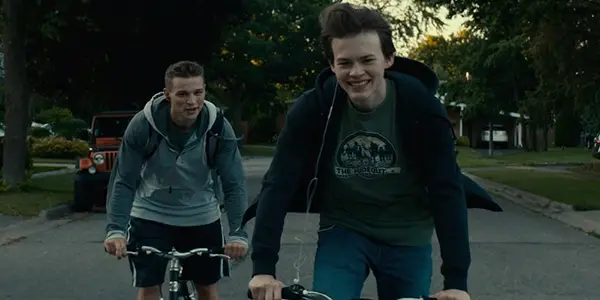
Leaving out any retribution for Ballas’s violence towards Franky is a real mistake. It’s the only point in the movie that makes the parents look stupid and powerless. To leave out a full story on Ballas facing any real world consequences for his homophobic attack adds a bitter taste to any otherwise charming, deeply touching film. Apparently, it’s still ok to beat a kid because you have issues with your sexuality. If it’s meant to be a commentary, it’s not a clear one. Despite this, the ending is still satisfying. Franky has come to love his gentle, quiet strength. Each event in his unfolding story broke him open to meet himself and like the person found.
How cinema paints the tone of teenage LGBTQ movies
Giant Little Ones is unapologetic about its optimism from the beginning. Franky is going to get through this and every element of the film demonstrates it. In contrast, the conversion camp drama, Boy Erased, expertly paints a film of complete sexual repression. Nearly every scene takes place indoors under drab lighting. When anyone is outside it’s either at night or under the cover of a building.
Teenage vitality is aggressively erased. While Jared (Lucas Hedges) waits for his mother outside under the center awning, no one is standing upright, the weight of their experience expressed in their bodies. The music is either somber or full of tension. Almost every scene has an adult looming and it’s the adult that has the most lines, unless a teen is confessing under watchful eyes. There’s foreboding here, that the adult are going to break these kids. Everything is aggressively unsexy. Jared’s monologues come in his rebellion, filled with rage and cries for freedom. Light, spaciousness, laughter and his own spaces come at the end.
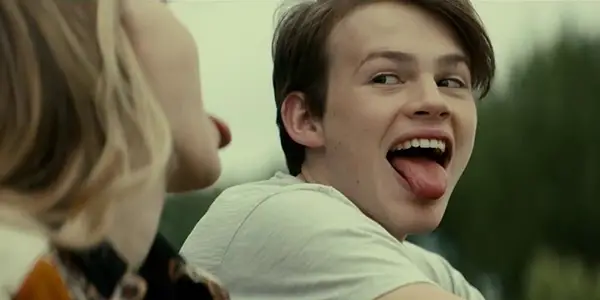
Giant Little Ones is the opposite in every way. The opening scene is Franky shirtless in bed with the sunlight streaming in, his sister (Olivia Scriven) bursts in joking about masturbation, followed by his mother who casually talks about a blind date. He gets breakfast in bed bare-chested surrounded by a matriarch who comfortably talks about sexuality and dating. The soundtrack composed by Michael Brook bounces with youthful exuberance throughout the film and easily carries into Franky’s epic birthday bash.
Franky always has his earbuds in and his soundtrack is the movie’s soundtrack. This is his movie. This film is awash in sunshine. Scenes indoors are mostly in daylight in open, welcoming spaces. Darkness shimmers with the mystery of being wild and young. The kids are free outside, riding their bikes around the neighborhood or in the locker rooms or in the pool. Everywhere they go are places they are comfortable with and choose to go. They are comfortable with their bodies, showing them off and letting the sun shine on their skin.
Adults come in to offer guidance but the characters are mostly with one another. The most significant scenes take place without adults. These are kids who are trusted. Because the drama also happens between them, instead of adults controlling the narrative, it retains that endearing quality of teenage angst that’s going to pass as it gets worked through.
Giant Little Ones shares many of these qualities with the charming 2018 teen comedy Love, Simon, while 2018 gay conversion drama The Miseducation of Cameron Post has all the similarities of Boy Erased. All of these stories need to be told.
Final Thoughts: Giant Little Ones
Excellent films are marked by every department telling the same story. Giant Little Ones is one of those gems. It sets out to clearly tell a positive story of sexual identity for teenagers, and it delivers. The director shared stories of letters he received that this movie literally saved lives of teens who saw it, sometimes just the trailer. It’s a great example of respecting the impressible intelligence of an audience and giving them the vision of themselves that’s going to make a positive impact on their lives.
What kinds of stories about sexual orientation and identity for teenagers do you think need to be told more often on the big screen?
Watch Giant Little Ones
Does content like this matter to you?
Become a Member and support film journalism. Unlock access to all of Film Inquiry`s great articles. Join a community of like-minded readers who are passionate about cinema - get access to our private members Network, give back to independent filmmakers, and more.
Ivy is a freelance writer and film journalist in NYC and LA. Her passion for film started when her family brought home the entire video store from one of their supermarket chains. Her main interests lie in psychological horror and women & cinema. Her work has appeared in Film Inquiry, PopOptique, & Sordid Cinema. She's also a Programmer for the Bushwick Film Festival. More of her work can be found @ thefilmremedy.com













